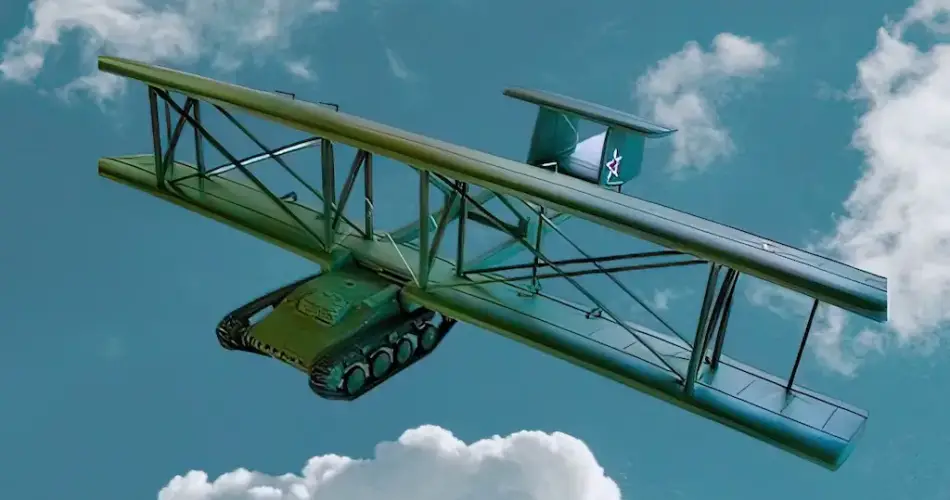War has always been a catalyst for innovation. From the trebuchets of medieval sieges to modern hypersonic missiles, humans have spent centuries dreaming up ways to kill others with as little effort as possible. But not every idea is a winner.
History is littered with bizarre, laughable, and downright dangerous weapons that flopped spectacularly. Let’s dive into seven of the strangest—and most disastrous—weapons ever conceived, now with *even more juicy details*!
1. The Bat Bomb: When the U.S. Tried to Weaponize Flying Rodents.

The Idea
In 1942, while the German Nazi army was steamrolling Allied forces and taking city after city, there was a mad rush in the scientific community for the development of super weapons that would quickly turn the tide of the war.
Around this time, the eccentric dentist Lytle S. Adams pitched a crazy but potentially revolutionary weapon to the White House.
The idea was simple: strap tiny, timed incendiary devices (weighing just 0.6 ounces) to Mexican free-tailed bats, pack them into bomb casings, and drop them over Japan. The bats would roost in attics and eaves of wooden buildings, then ignite to cause devastating city-wide infernos that would be impossible to control.
Why the Bat Bomb Failed

At first glance, this idea might seem nonsensical, but to a United States military that Just suffered a devastating loss at Pearl Harbour, nothing was too stupid to try. In Fact, the United States government invested a whopping $2 million (about $30 million today) into this crazy project, which was eventually called Project X-Ray.
So why did the bat bomb fail? Initial tests were actually promising as it was discovered that about 4,000 bats could carry up to 40,000 tons of high incendiary explosives. However, during a live demo at Carlsbad Army Airfield, the experimental bats escaped and burned down a general’s car, a hangar, and a barracks. The plan was simply too unreliable, as it was difficult to control where the bats would go upon their release.
The project was scrapped in 1944—partly because the atomic bomb took priority, but also because bats proved too effective at starting fires… just not the right ones.
Behind the Madness of the Bat Bomb
Adams chose bats because they could fly in darkness, carry heavy loads, and roost in hidden spots. The military even designed a refrigerated bomb casing to keep the bats dormant during deployment.
2. The Soviet Anti-Tank Dogs: Suicide Pups with Explosive Backpacks

The Idea
In the first month of the advance of the German Wehrmacht, the soviet union had already lost more than 2 million men, and it looked like the country would collapse at any time. Desperate to stop German Panzers in 1941, the USSR trained dogs to associate food with the undersides of tanks.
Each dog wore a 26-pound bomb triggered by a wooden lever; when the dog crawled under a tank, the lever would snap, detonating the explosive. And tragically sacrificing the dog.

Why the Soviet Anti-Tank Dogs Fail
During the development of the project, the dogs were trained with stationary Soviet tanks and were often confused in live situations when they were supposed to move against German tanks.
Also, the noise, diesel smells (Soviet tanks used gasoline), and chaos of battle sent many dogs fleeing back to their handlers. At least one dog blew up a Soviet tank during the Battle of Stalingrad. By 1942, the program was axed, though some dogs were repurposed for mine detection.
Also, the German soldiers learnt quickly and were often on the lookout for any stray animal on the battlefield. These dogs were targeted and killed before they could detonate their explosives. As the success rate of the dogs began to dwindle, the Soviets stopped the project.
The Soviet Anti-tank project was not a total failure, though, about 300 Wehrmacht tanks were destroyed by the anti-tank dogs
Grim Legacy of the Soviet Tank Dogs.
Around 40,000 dogs served in WWII, but only the anti-tank units became infamous. Memorials in Russia still honour their sacrifice. A monument to the dogs can still be found in Volgograd, Russia.
3. The Gay Bomb: A Chemical Weapon to Make Enemies…Fall in Love?
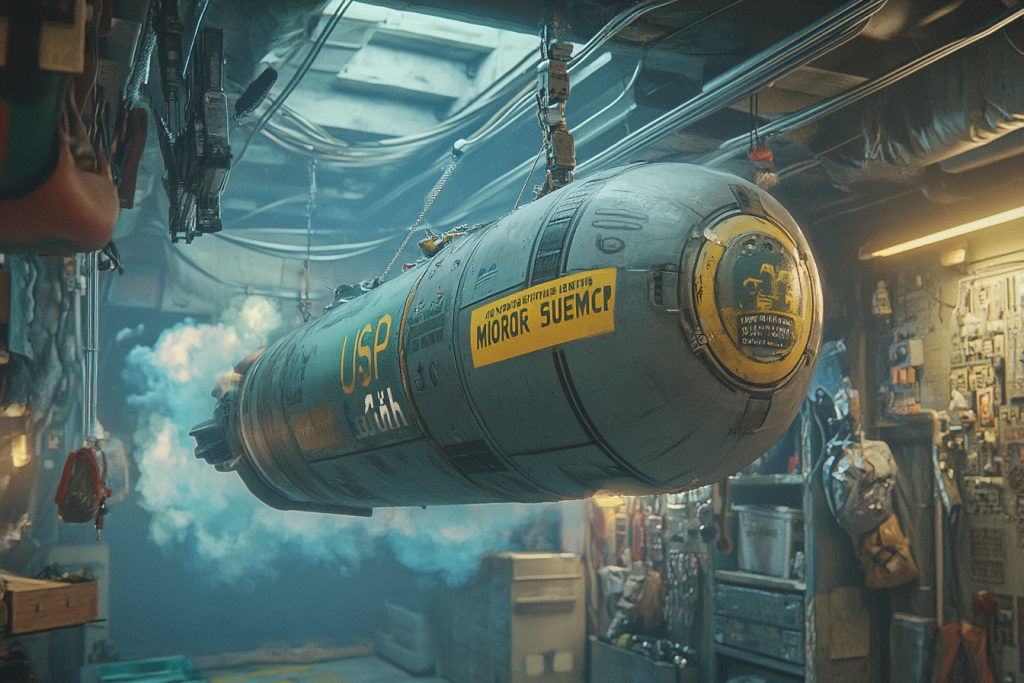
The Idea
In 1994, the Wright Laboratory in Ohio proposed a non-lethal “gay bomb” that would rain pheromones and aphrodisiacs like testosterone-laced chemicals on enemy troops, causing “homosexual urges” and “distracting behaviour.” According to the proposal, this project is designed to “undermine unit discipline.”
Why the Gay Bomb Failed
Beyond its apparent offensive premise, the science was pure fiction. No chemical can alter sexual orientation, and delivering such agents in combat was logistically impossible.
When the proposal leaked in 2004, several LGBTQ+ groups and scientists slammed it as both absurd and homophobic. The Pentagon released a statement denying ever pursuing the project.
4. The Great Panjandrum: Britain’s Rocket-Packed Wheel of Explosives
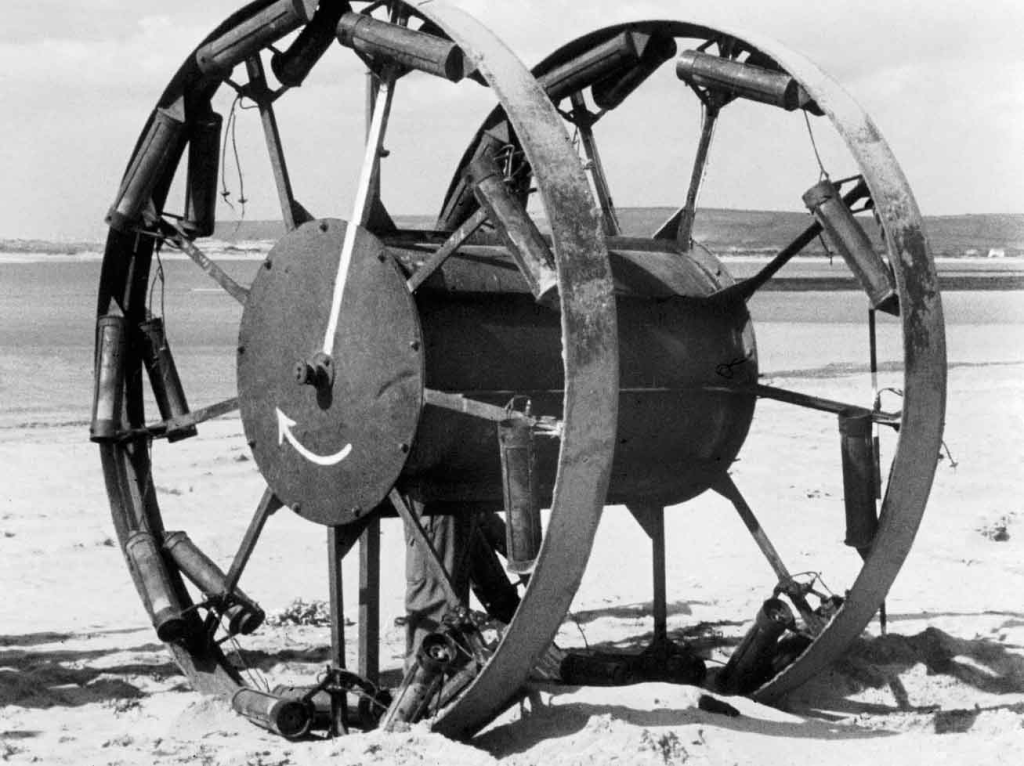
The Idea
Towards the end of the second world war, the British Army was thinking of ways to get penetrate the Atlantic Wall, 10 ft thick massive fortifications designed by the Nazis as a defence against the highly anticipated Allied invasion of Nazi-occupied Europe.
One of the many weapons intended to help in the Great Panjandrum. Designed in 1943 to breach Hitler’s Atlantic Wall, the Panjandrum was a 10-foot-tall, rocket-propelled wooden wheel packed with 4,000 pounds of explosives. Seventy cordite rockets (34 on each wheel) would propel it at 60 mph toward concrete bunkers.
Why the Great Panjandrum Failed

The design of this weapon was not stable or safe enough to serve as a reliable military weapon. The rockets burned inconsistently, and the wooden frame couldn’t handle the stress. One officer dryly noted, “The only thing it destroyed was our dignity.”
During a test in Devon, England, rockets tore loose, sending the Panjandrum zigzagging across the beach like a drunken UFO.
Engineers added stabilizers and extra rockets, but subsequent tests saw it veer into spectators, launch into the sea, or spin like a top. The final report concluded it was “too dangerous to use in any capacity.”
5. Project Pigeon: Pigeon-Guided Missiles (Yes, Pigeons)
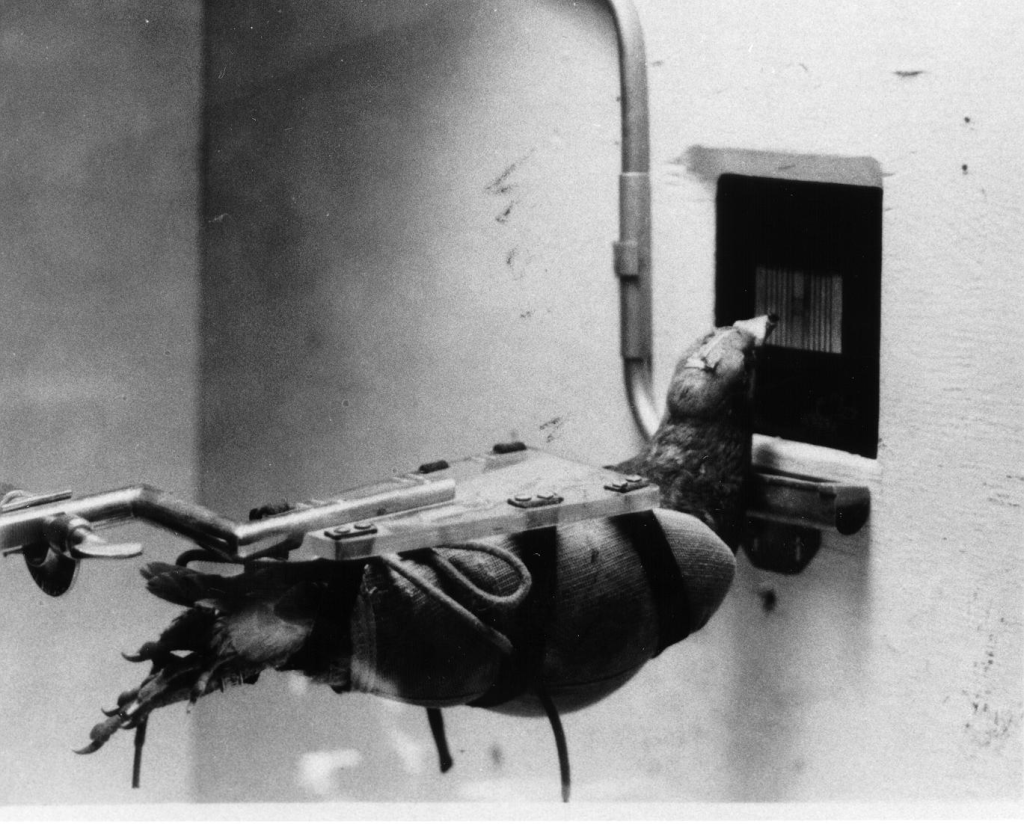
The Idea
The Pigeon Project was another crazy animal project funded by the United States Military during the Second World War. At the time, precision-guided munitions were not available, and hitting moving targets, such as enemy ships, was extremely difficult.
The idea behind this bizarre weapon was simple. Behaviorist B.F. Skinner trained pigeons to recognize targets and peck at the image of the target when it was displayed on a screen.
As the pigeons peaked at this image, they adjusted the bomb’s fins and guided it towards the intended location. The birds were conditioned with food rewards to recognize ship silhouettes.
Why the Pigeon Project Failed
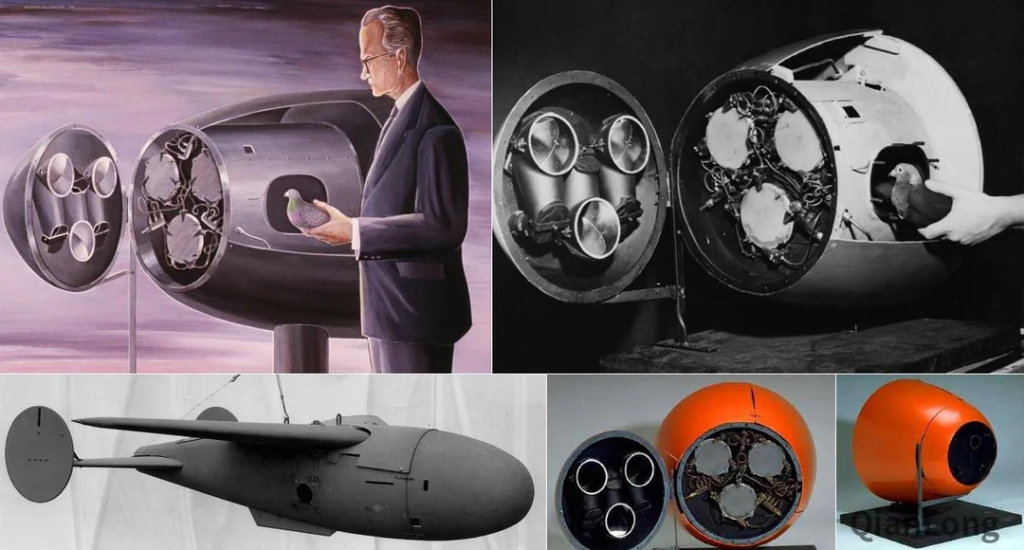
The National Defense Research Committee called it “impractical” but funded Skinner anyway. Pigeons performed well in simulations, but the military baulked at relying on birds in combat.
As one general scoffed, “I’ll be damned if I trust a pigeon to fly my missiles.” The project died in 1944, though Skinner later used the research for his theories on operant conditioning.
However, during the mad arms race of the Cold War, the United States Military Briefly revisited pigeon-guided systems in the 1950s, but by then, early computer guidance made them obsolete.
6. The Flying Tank: When the Soviets Tried to Air-Drop Armor.

The Idea
During the brutal slug between the Soviet Union and the Nazis, the Soviets tried everything to gain an edge over the invaders, and one of the craziest things they designed was the flying tank.
The 1942 Antonov A-40 “Krylya Tanka” (Tank Wings) was a T-60 light tank fitted with detachable biplane wings and a tail. A bomber would tow it into the air, release it, and the tank would glide behind enemy lines. After landing, the crew would remove the wings and roll into battle.
Why the Soviet Flying Tanks Failed
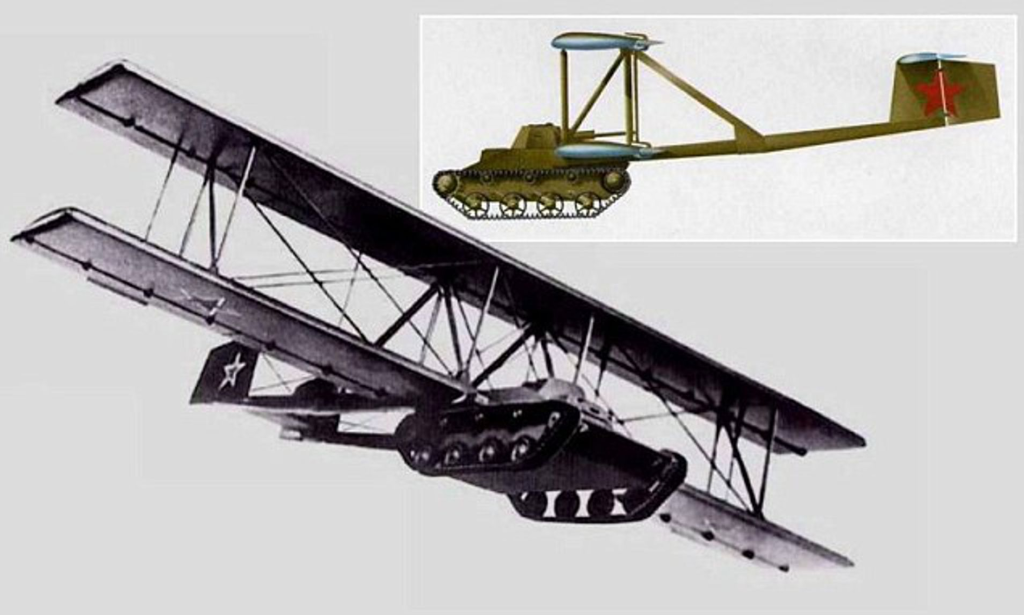
The prototype, weighing 13,000 pounds, was too heavy for its glider frame. During its lone test flight, the tow plane struggled to gain altitude, forcing the pilot to ditch the wings and crash-land. The tank crew survived, but the Soviets realized parachuting lighter vehicles was safer.
However, while this idea might sound crazy, there have actually been viable military weapons built on its premise. Today, the U.S. uses air-droppable M551 Sheridan tanks, proving the idea wasn’t all bad—just the execution.
7. Archimedes’ Death Ray: Ancient Greece’s Solar-Powered Superweapon.

The Idea
During the 212 BCE Siege of Syracuse, historian Lucian claimed Archimedes used hexagonal bronze mirrors to focus sunlight and ignite Roman ships. Centuries later, Leonardo da Vinci sketched similar concepts.
Why the Death Ray Failed
Ancient sources like Plutarch never mentioned the death ray, and modern tests are mixed. In 1973, Greek scientists set a plywood ship ablaze with 70 mirrors, but it took perfect weather and stationary targets.
A similar experiment conducted at the Massachusetts Institute of Technology (MIT) in 2005 required 127 mirrors and 10 minutes to burn a small boat. Realistically, the death ray was too finicky for battle.
Archimedes did invent catapults and clawed cranes to defend Syracuse, but the death ray was likely a legend. Still, it endures as a symbol of ancient ingenuity—or ancient tall tales.
Read Also:
7 Deadliest Snipers In Military History
8 Ancient But Extinct Animals the Romans Saw
Why Do These Failures Matter?
These flops aren’t just funny stories—they’re lessons in creativity, risk, and human folly. The bat bomb inspired modern micro-drones, Skinner’s pigeons shaped behavioural science, and the Panjandrum’s chaos taught engineers the value of stability (and sanity checks). Even the “gay bomb” forced conversations about ethics in warfare.
So next time someone pitches a “revolutionary” weapon, remember: history’s worst ideas often pave the way for its best ones. Or, at the very least, they make great trivia night material.
What’s the strangest weapon you’ve heard of? Share your favourite historical flop in the comments!
